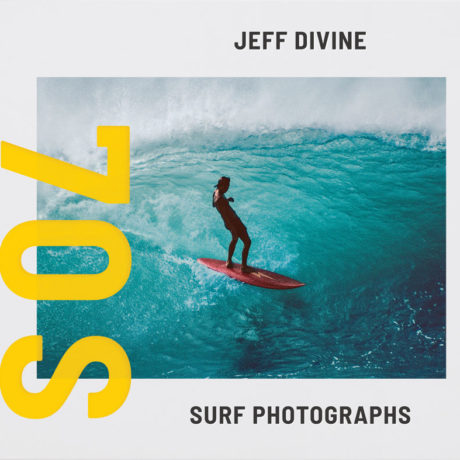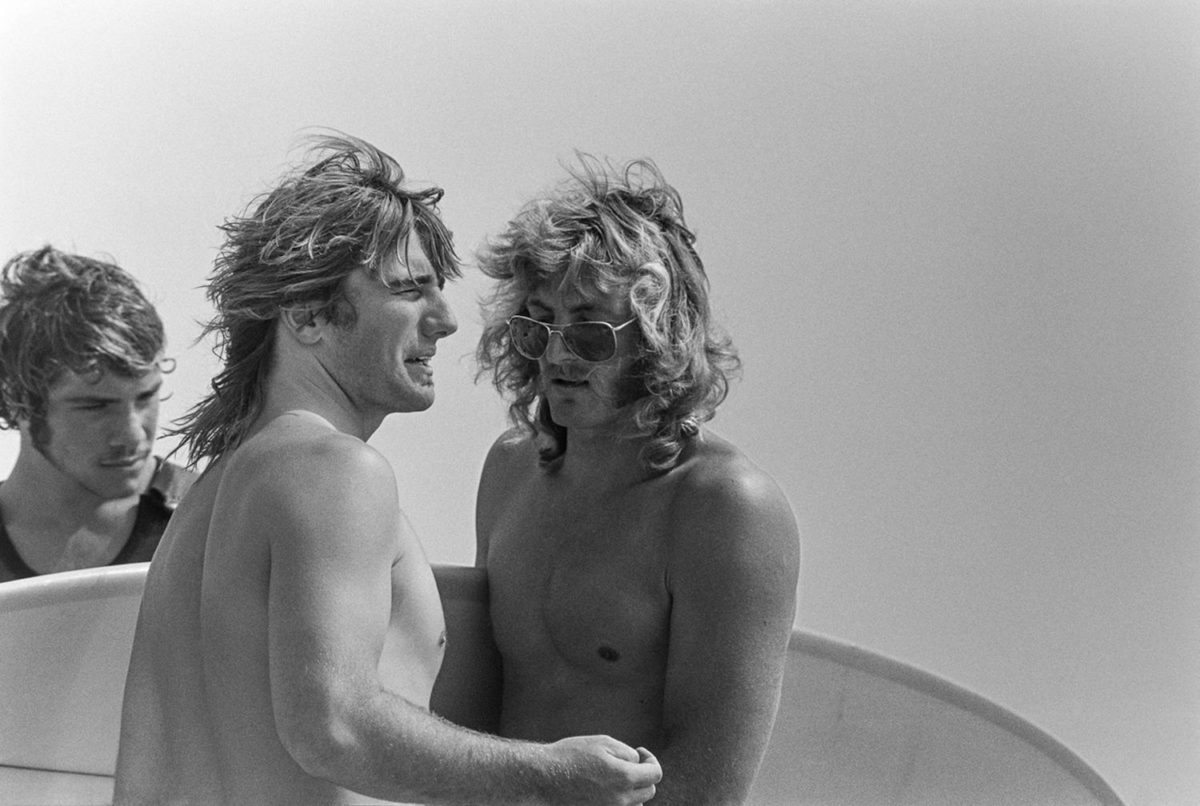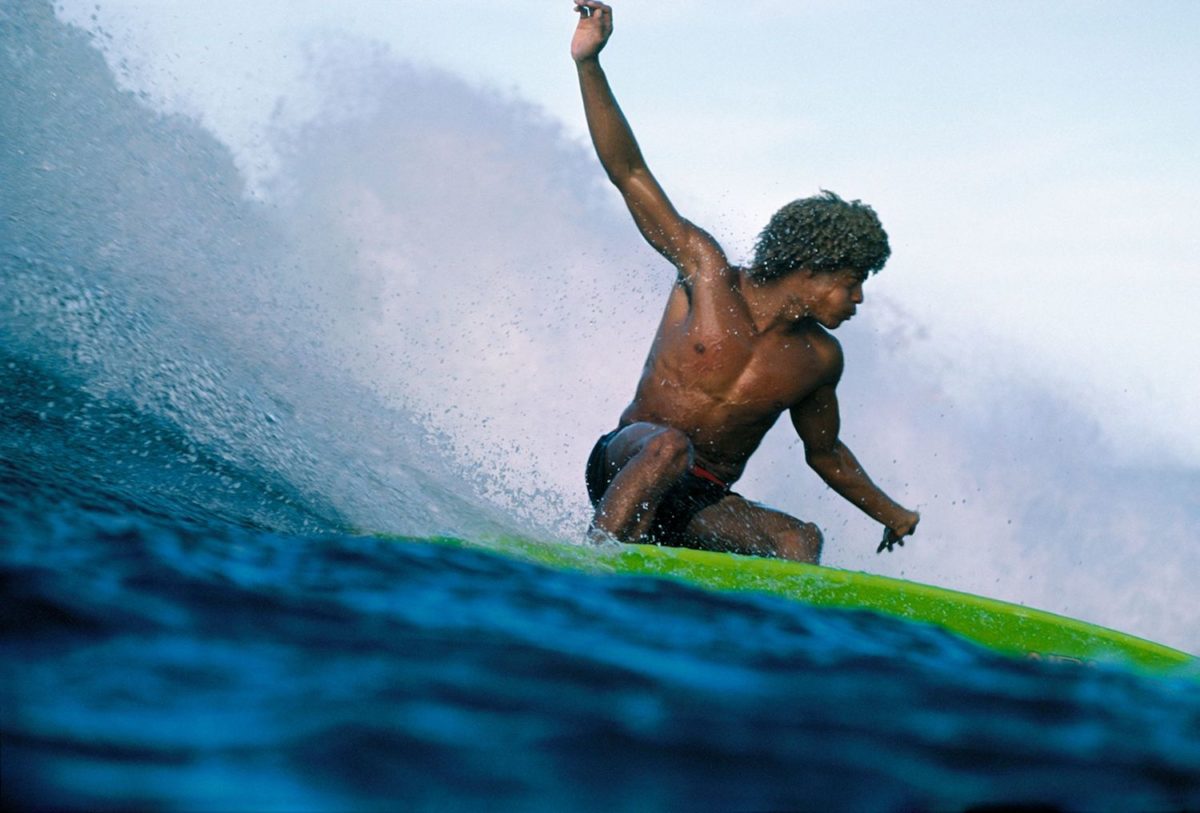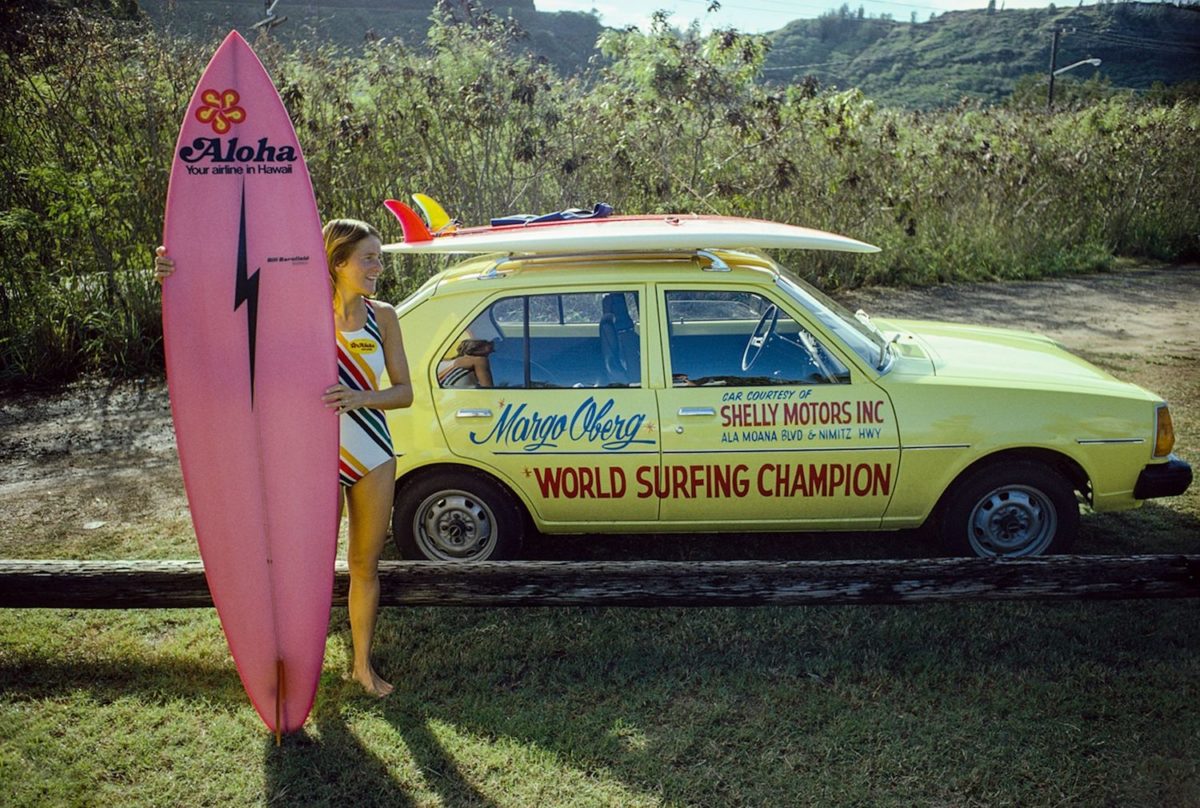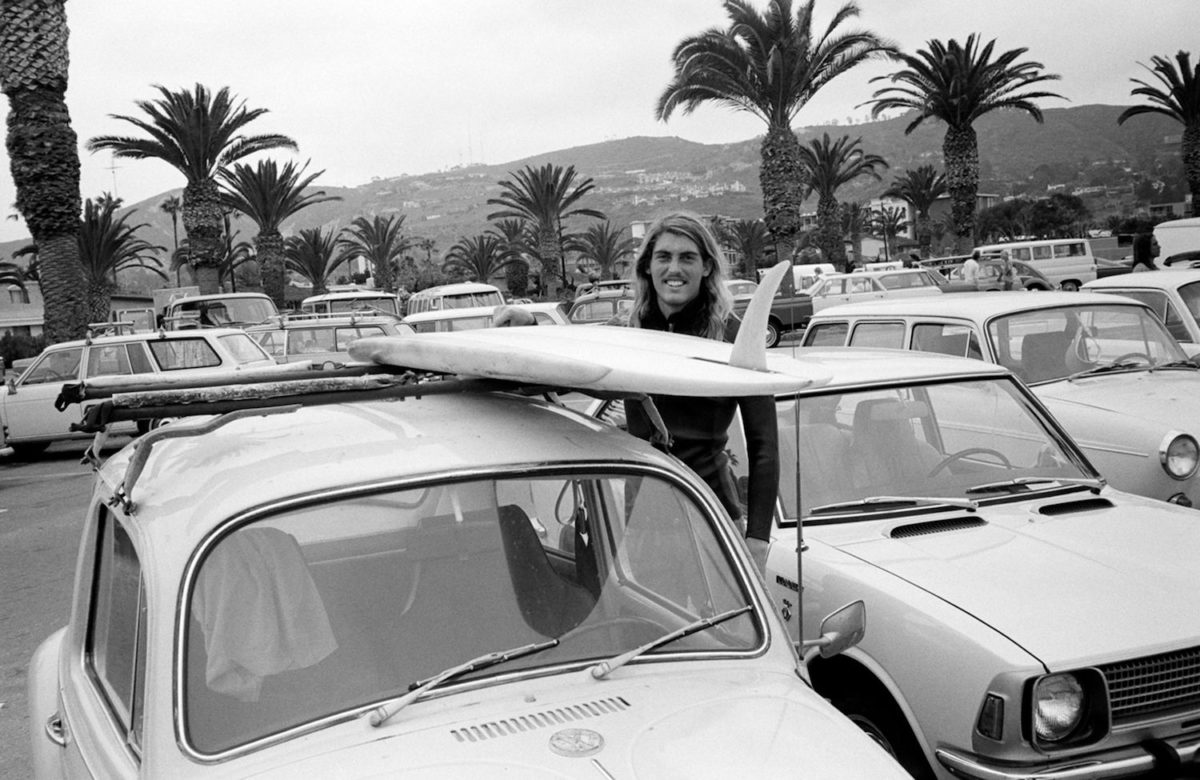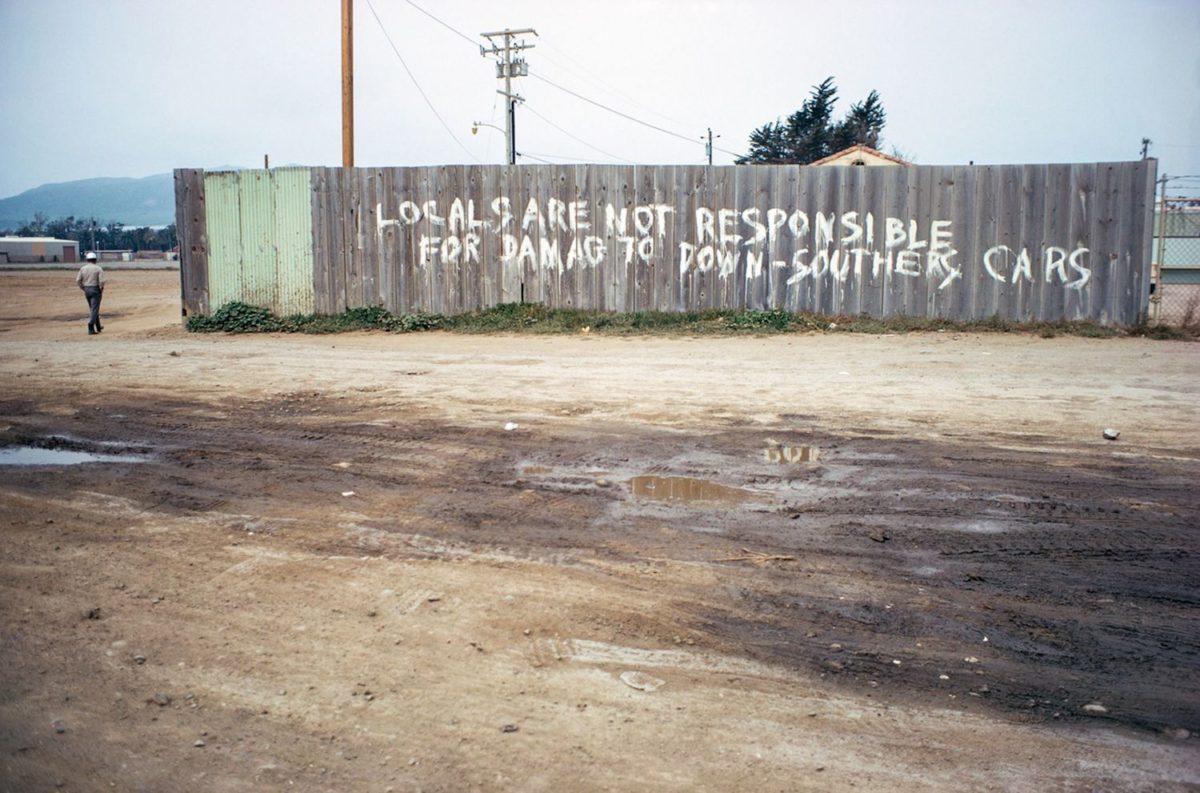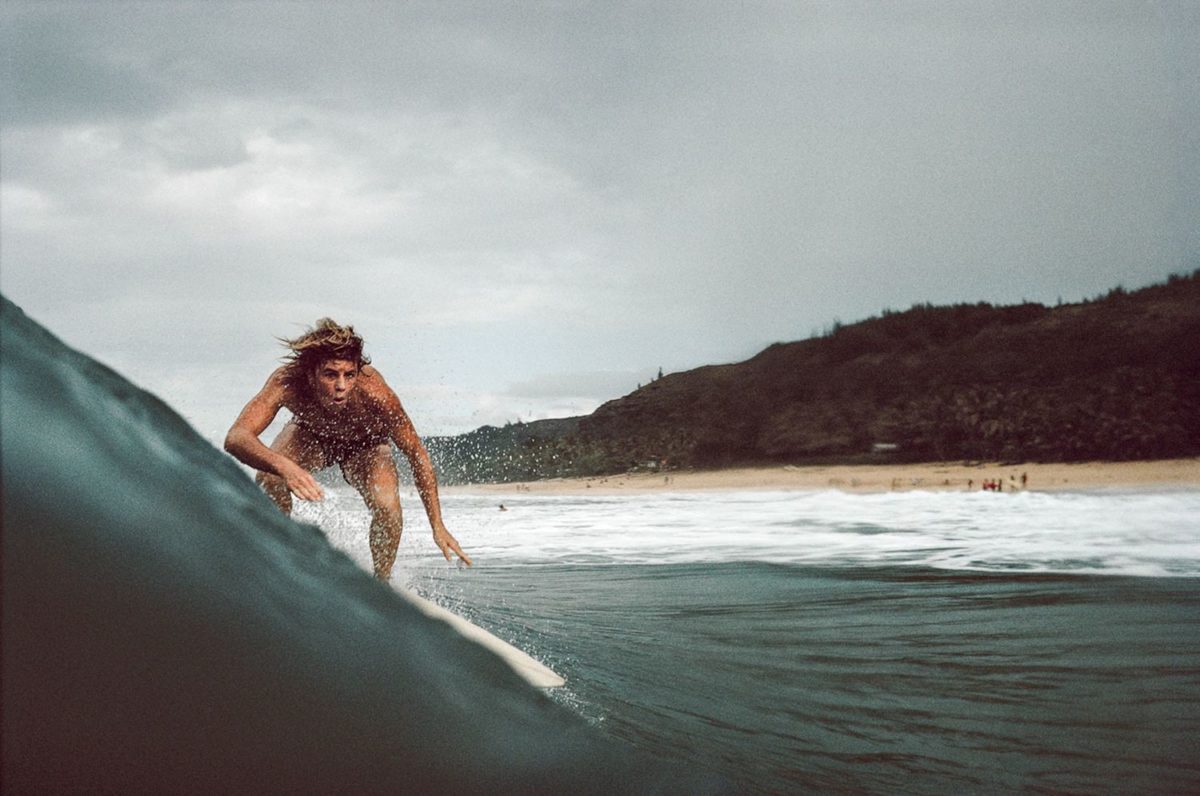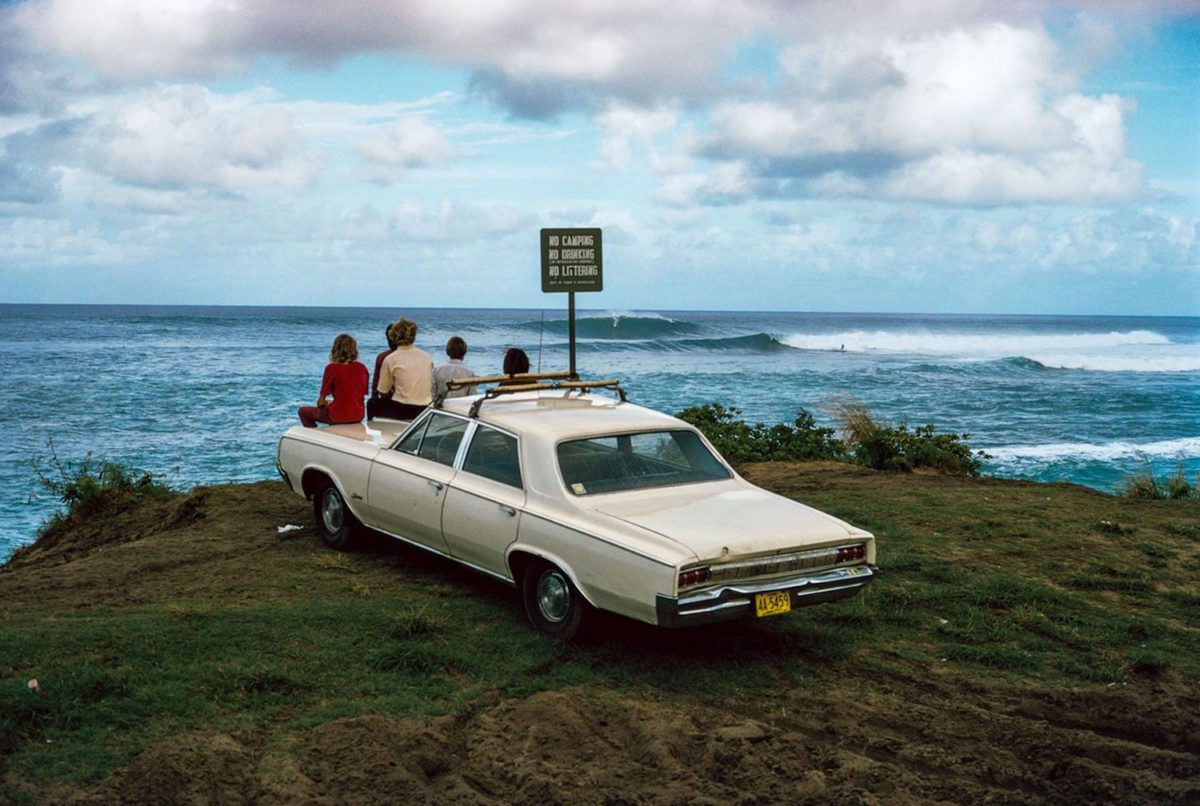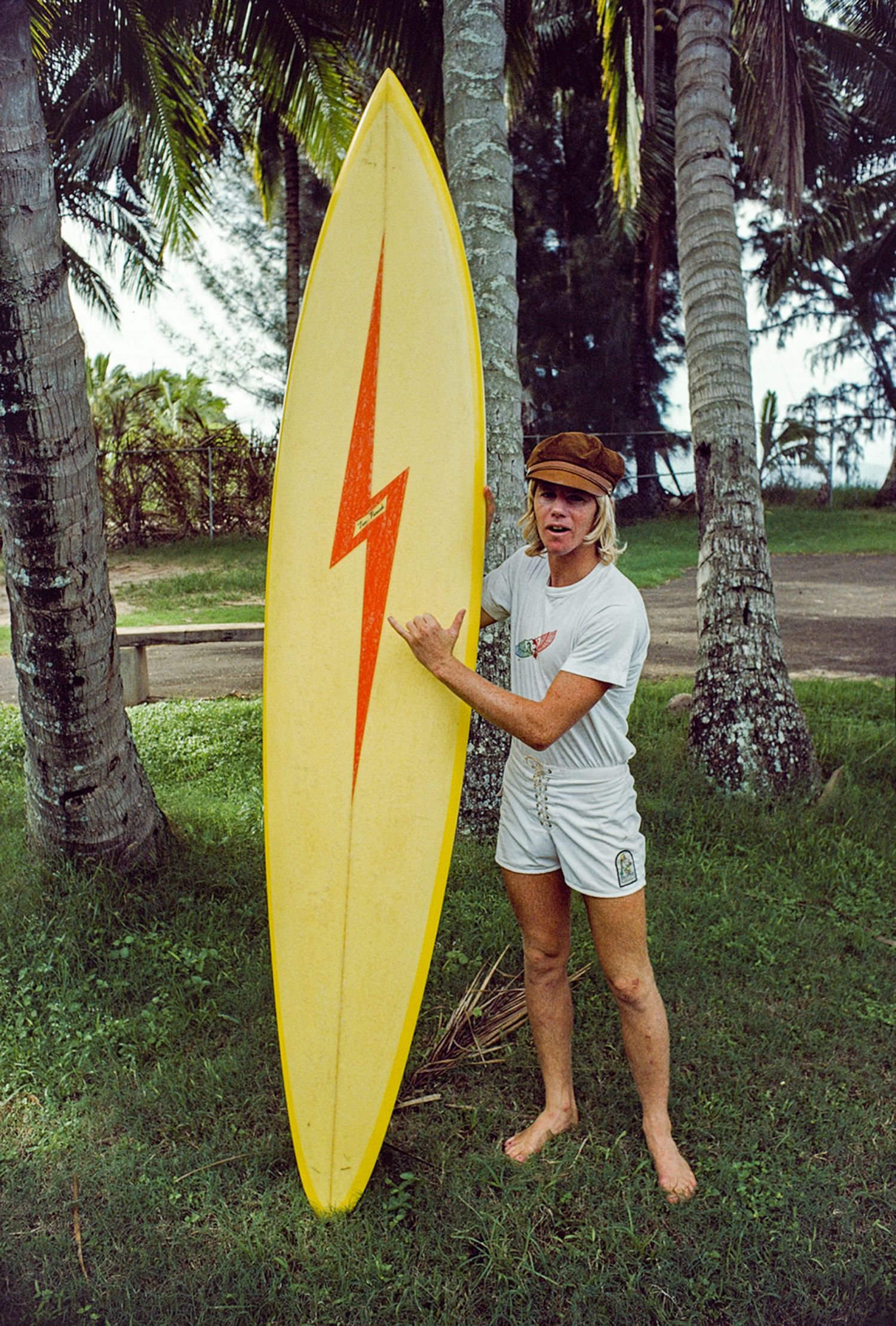
Wayne Rabbit Bartholomew, Ke Iki Road, Oahu, Hawaii 1976. Photo by Jeff Divine
For many of us today, surfing conjures up images of buff dudes with flowing, sea-swept blonde locks, and nineties stoner lingo that revolves around words like “tubular!”, “gnarly!” and “radical!”. This sort of Teenage Mutant Ninja Turtles lexicon seems sweetly redolent of slacker movies and the kind of boys you fancied when you were fourteen but that your mum probably worried about a bit. But let’s not forget that back in the day, the sport—which is far from an easy one to master—was upheld as not just a feat of skill and athleticism, but an exceptionally cool pursuit. It inherently implied a certain set of sociopolitical beliefs around freedom, and embracing and respecting nature, as well as a joie de vivre that seems both exceptionally American and wholeheartedly youthful.
“It was a moment when everything in our little world felt up for grabs”
These sensibilities are encapsulated beautifully in the photographs of Jeff Divine, a man who was at the coalface/shore of all this throughout the seventies in his role shooting for Surfer, the monthly magazine that was held up as “the bible of the scene”. A stunning new publication from T. Adler Books draws together photographs from his extensive archives—largely shot for this mag—in a deliciously summery showcase of what the surf scene was really like during the seventies, full of beguiling turquoise and sky blue tones, bronzed dudes and people generally seeming to have a very lovely time indeed.
Even Divine’s monochrome shots somehow feel colourful and sun-drenched. The images in the book, simply titled Jeff Divine: 70s Surf Photographs, were shot across the coastlines of California, Mexico and Hawaii, with sites including Baja, Dana Point, Laguna Beach, La Jolla, Malibu, San Clemente and Oahu. They variously showcase the sense of freedom and community that surfers lived by, and also the wildly impressive feats of mastery of their sport.
The shots demonstrate both a keen eye for a great image, and also an innate understanding of his subject matter. “I surfed first and then shot photos,” says Divine. “As things got more serious, I shot first and surfed later. Getting the shot became almost as fulfilling as getting the wave.”
- Left: Buttons Kaluhiokalani, Velzyland, Oahu, Hawaii 1974; Right: Margo Godfrey Oberg, Sunset Beach, Oahu, Hawaii 1977. Photo © Jeff Divine
Divine grew up in La Jolla, a seaside area of San Diego, California, and began photographing the surfing world in his hometown when he was just a teenager, in 1966. He went on to join Surfer Magazine in a staff position in 1971, and spent thirty-five years as a photo editor at that publication and Surfer’s Journal: mags revered in most graphic design circles thanks to their being designed by “grunge typography” king David Carson during the late 1980s and early nineties. Divine’s appointments at the publications meant that he undertook a very gnarly, almost forty-year-long schedule of annual trips to the north shore of Oahu, Hawaii, and numerous explorations with the best surfers in the world.
- Left: Jeff Divine, La Jolla Shores, CA 1970; Right: Waimea Bay, Oahu, HI 1977. Photo © Jon Foster
But his work was about more than just sea and waves. “The social upheavals of the period touched surfing, but only glancingly—in music, fashion, a wavelet of Eastern mysticism, more than a wavelet of recreational drugs, and a few muddy shining pockets of back-to-the-landism in places where the land happened to abut pumping waves,” writes Pulitzer Prize-winning author William Finnegan in the foreword to the book.
Finnegan adds, “It was a moment when everything in our little world felt up for grabs. Surfing had boomed in popularity in the beach-blanket sixties, failed its audition as a mainstream televised sport, and then blown itself up in a late-sixties design revolution that reduced boards, seemingly overnight, from nine feet six inches to six feet six, from twenty-five pounds to less than ten.”
Divine’s images don’t just depict a very photogenic sport (largely one, if we’re honest, populated by fit young guys) and its surrounding subculture, but also a feeling of
optimism, and a Technicolour-hued hope for a new kind of peaceful rebellion. Surfing wasn’t a discrete entity, a “sport” sport in the way, say, football or baseball might be, but a key player in the broader narrative of the era in terms of its reflection of, and impact on, visual culture.
